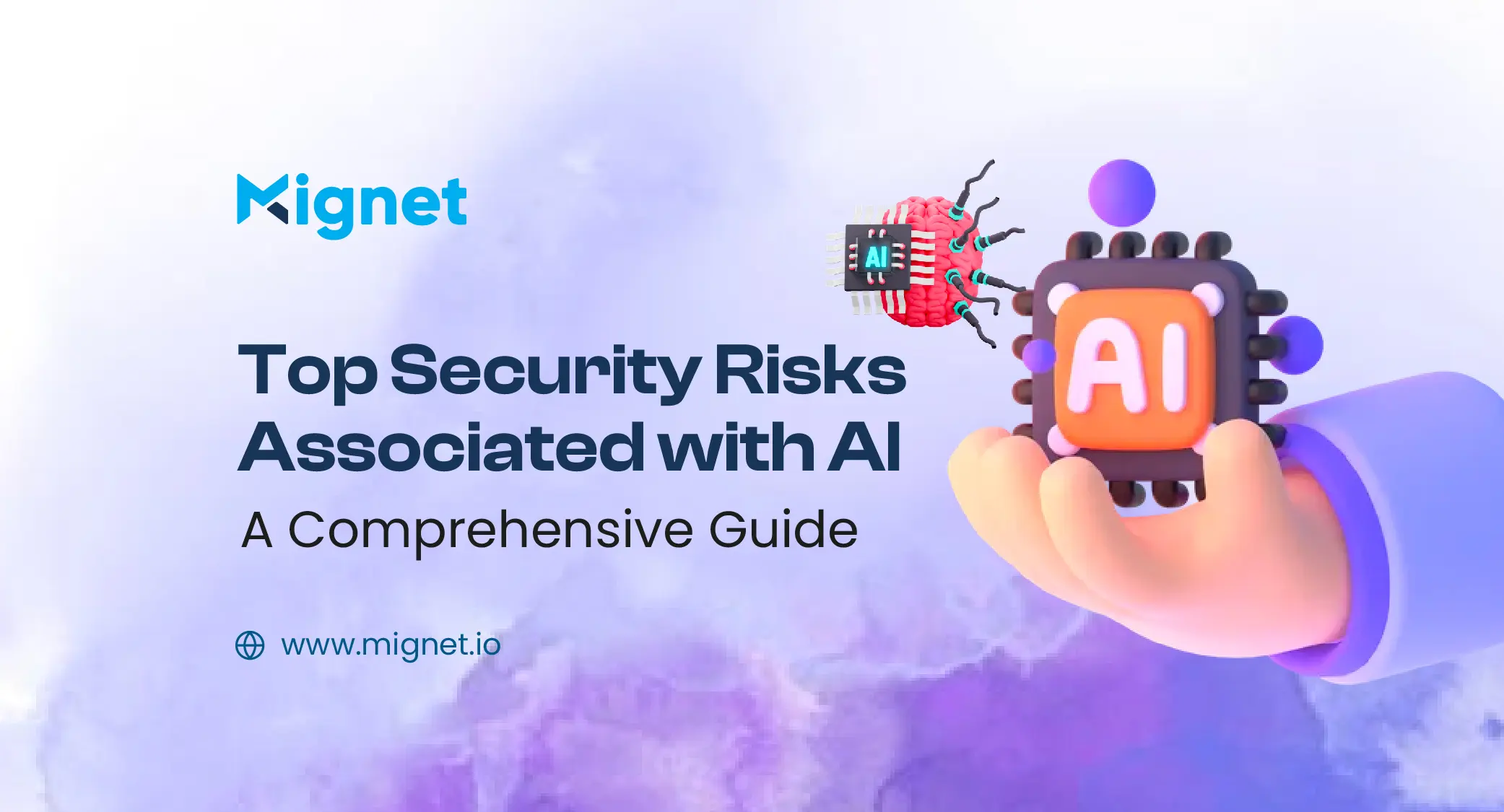
Unveiling the Top Security Risks Associated with AI: A Comprehensive Guide
Table of Contents
As AI continues to transform industries with its unprecedented capabilities, it also presents a host of unique challenges and vulnerabilities. In this blog, we delve deep into the world of AI security to equip you with the knowledge and insights necessary to protect your AI-driven systems effectively.
AI’s extraordinary ability to process vast amounts of data and make autonomous decisions has revolutionized businesses across various sectors. However, with such power comes the potential for exploitation by malicious actors. From AI model vulnerabilities to data privacy concerns, this guide covers the most pressing security risks that demand your attention.
Join us as we navigate the complexities of AI security and explore strategies to mitigate the risks associated with this transformative technology. Let’s empower your organization to embrace AI’s potential while safeguarding its integrity and protecting against emerging threats.
Understanding the Vulnerabilities and security risks Associated with AI
1. AI Model Vulnerabilities
Incorporating AI models at the heart of AI-driven systems introduces a pivotal challenge—exposing potential vulnerabilities that could be exploited by malicious entities. One critical example is adversarial attacks, where threat actors manipulate AI models through meticulously crafted inputs. A parallel risk, data poisoning, further underscores the concerns by injecting malicious data into training datasets, thereby skewing the AI’s decision-making trajectory. This section delves deeply into the array of AI model vulnerabilities, offering insights into various categories of susceptibility and proposing effective measures to bolster their resistance against potential attacks.
AI relies on vast datasets to learn and make predictions. However, the collection, storage, and utilization of such data raise concerns about data privacy and ethics. Organizations must tread carefully to avoid data breaches and maintain ethical standards while leveraging AI. This section explores the challenges surrounding data privacy and the ethical dilemmas associated with AI decision-making algorithms. It also highlights the importance of adopting responsible AI practices to ensure the trust of users and customers.
3. AI-Powered Cyberattacks
The rise of AI-powered cyberattacks is a worrisome trend in the cybersecurity landscape. Threat actors leverage AI to craft sophisticated malware, automate phishing campaigns, and breach cyber defenses autonomously.
By studying AI’s malicious applications, security professionals can better understand and mitigate the threats posed by AI-driven cyberattacks. This section examines the various ways AI is weaponized in cyberattacks and offers insights into how organizations can bolster their cybersecurity defences.
4. Explainability and Transparency
The lack of explainability and transparency in AI decision-making processes poses a significant challenge, especially in critical applications such as healthcare and finance. Understanding why an AI system arrives at a particular decision is essential for building trust and avoiding biases. This section delves into the importance of AI explainability, explores different explainability techniques, and addresses how organizations can navigate the complexities of explainable AI.
5. Human-Machine Interaction Risks
The growing interaction between AI and humans has given rise to unique risks. Deepfake technology, for instance, poses a significant threat to online security and can be used for misinformation and social engineering. This section discusses the implications of AI-generated content, the potential dangers of deepfakes, and strategies to detect and counter manipulative tactics.
6. Regulatory and Compliance Challenges
The adoption of AI also brings new regulatory and compliance challenges. Governments and international bodies are increasingly focusing on AI governance and imposing standards to ensure responsible AI deployment. This section examines the evolving landscape of AI regulations, and the steps organizations must take to align their AI practices with these requirements.
Conclusion:
AI model vulnerabilities pose a critical concern, with adversarial attacks and data poisoning being potential entry points for malicious actors. Safeguarding AI models against exploitation requires ongoing research and robust security measures.
Data privacy and ethics are paramount in the age of AI, where massive datasets fuel its capabilities. Organizations must prioritize data protection, implement strict access controls, and adhere to ethical AI practices to maintain user trust.
The rise of AI-powered cyberattacks demands vigilant cybersecurity measures. AI-driven malware and automated phishing campaigns necessitate advanced threat detection and response capabilities to defend against evolving threats.
Explainability and transparency in AI decision-making are essential for building trust and ensuring accountability. AI systems must be interpretable, enabling users to understand the reasoning behind their decisions.
Unlock productivity: Join our Email List
Download Our Profile
Get to know more about Mignet Technologies by downloading our profile.



